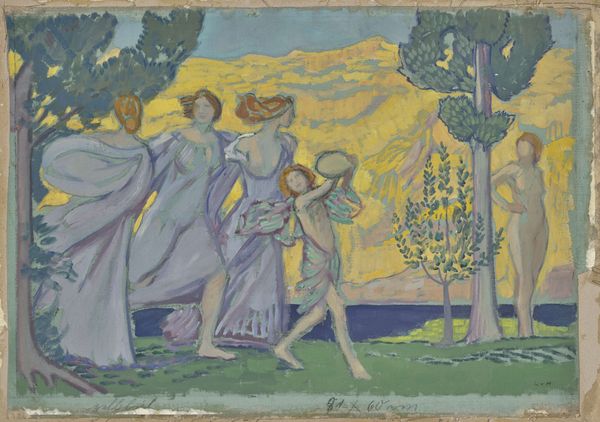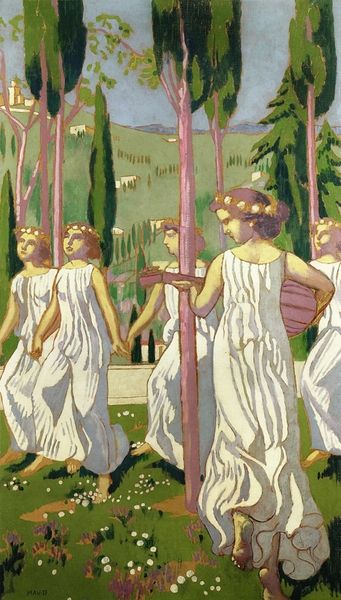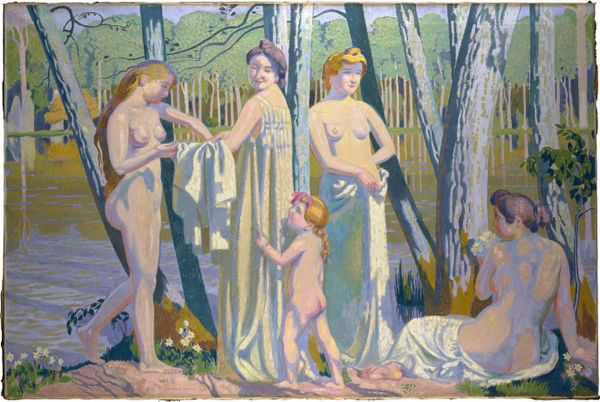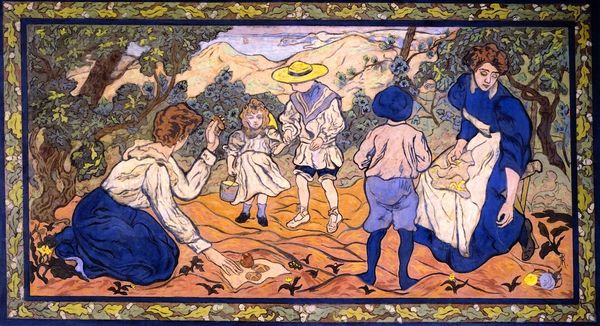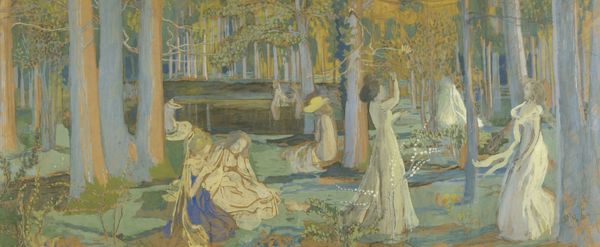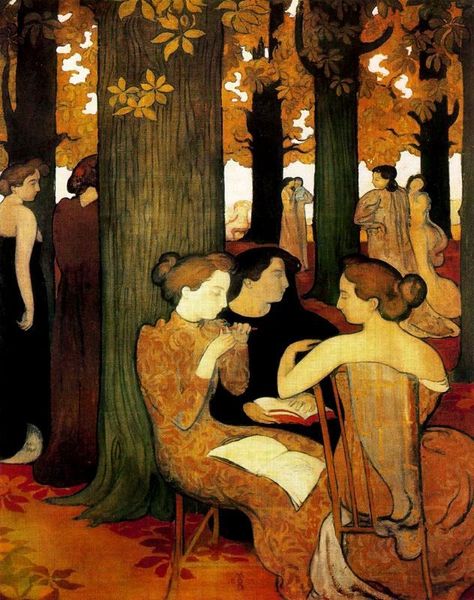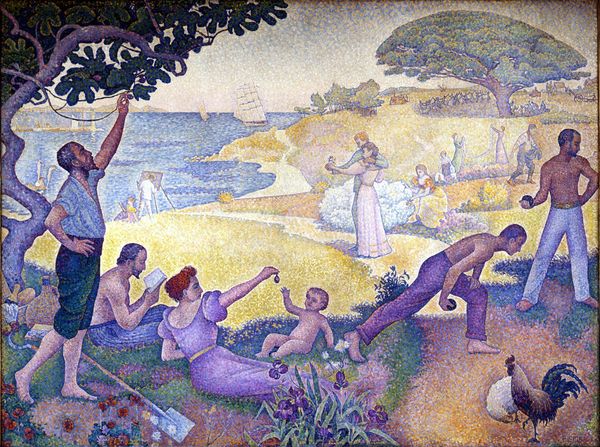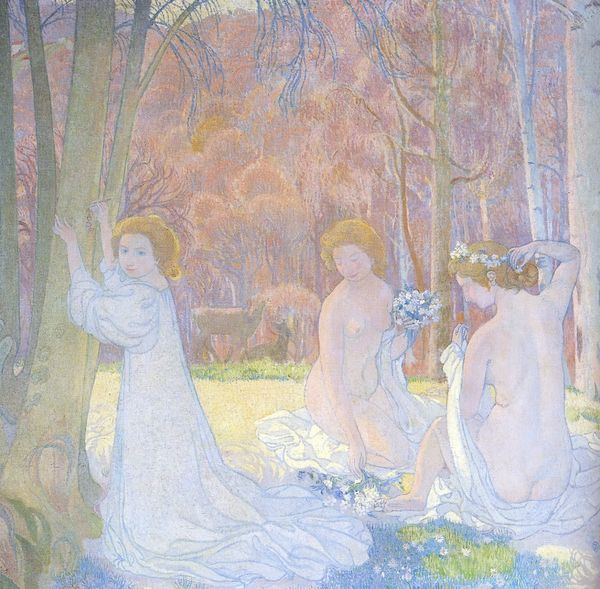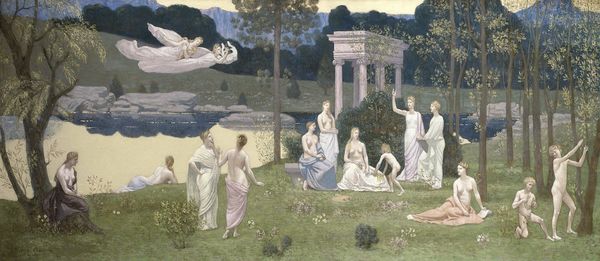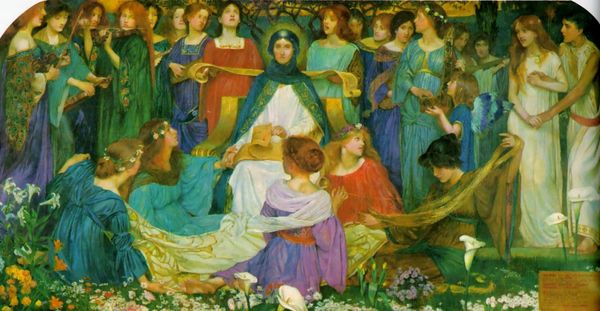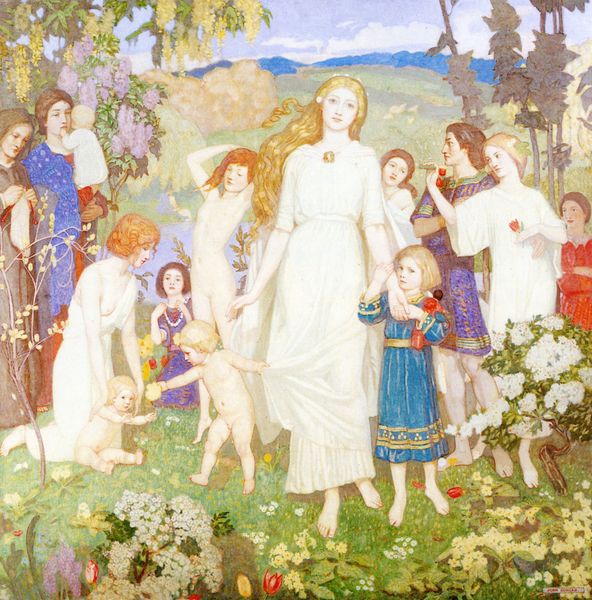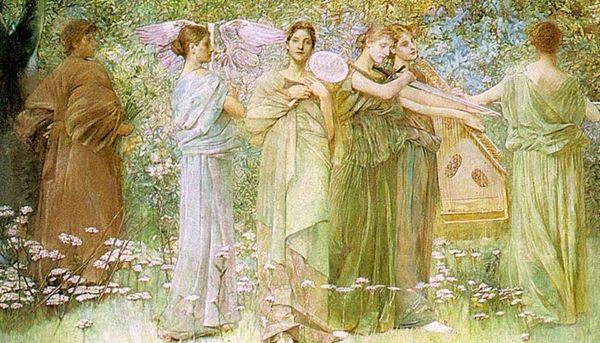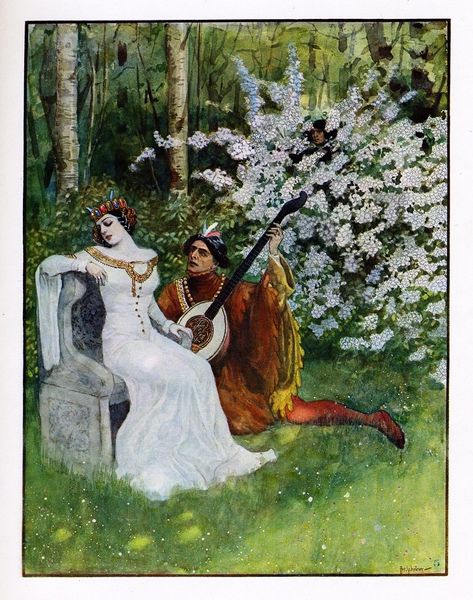
painting, oil-paint, oil-on-canvas
#
narrative-art
#
painting
#
oil-paint
#
landscape
#
figuration
#
naive art
#
symbolism
#
history-painting
#
oil-on-canvas
Dimensions: 45 1/4 x 65 in. (114.9 x 165.1 cm)
Copyright: No Copyright - United States
Editor: This is Maurice Denis’s "Orpheus and Eurydice," painted in 1910, using oil on canvas. The whole scene feels like a dream, very serene and stylized, but the figures seem strangely disconnected. What's your take on this piece? Curator: Let’s consider the materiality itself. Notice how Denis isn’t trying to hide the brushstrokes; the painting revels in the visibility of its making. That flattened space and those repetitive, almost patterned strokes of oil paint weren't just about depicting a scene, but about declaring the presence of the artist's labor. What's the cultural significance, then, of taking this myth and embedding it in such visible toil? Editor: So, you’re saying the painting's not just illustrating a story but commenting on the act of creation, making it more "real" somehow by highlighting the process? I was stuck on trying to decipher the figures' emotions. Curator: Exactly. Look at the repeated forms: the vertical tree trunks echoing the figures’ robes. Does this suggest that we should also be viewing the figures as crafted or as “material?” Is it commentary of humans as product or tools in society or social structure. Where does free will and intent stand. And how is this related to a historical theme. Editor: That's fascinating. I never considered the historical story itself to be of production value as well! So is he critiquing the detachment, or elevating craft? Curator: The deliberate, almost industrial application of paint challenges any romantic reading. Instead of the traditional skill-based "illusion", here, art production mirrors something far removed from inspiration; even alienation in repetitive labour is now an intentional creative move. He is not saying it explicitly. I would leave the interpreting to viewers like you. Editor: Wow, I definitely see the painting in a new light now. It's not just a pretty scene; it’s a commentary on labor, material, and creative production of narrative and identity! Curator: Indeed! And through Denis's unconventional manipulation of the traditional myth and technique, we gained deeper awareness.
Comments
minneapolisinstituteofart over 1 year ago
⋮
In Greek mythology, Orpheus is portrayed as a poet and musician from Thrace whose lyre playing could charm all who heard his seductive music. In this representation, Eurydice, the wood nymph who became Orpheus's wife, kneels transfixed by his song. Like many Symbolist artists, Denis explored the power of music as a theme in his art, hoping to make the visual arts as lyrical and suggestive as sound itself.
Join the conversation
Join millions of artists and users on Artera today and experience the ultimate creative platform.
